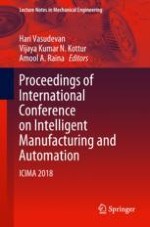This book presents the outcomes of the International Conference on Intelligent Manufacturing and Automation (ICIMA 2018) organized by the Departments of Mechanical Engineering and Production Engineering at Dwarkadas J. Sanghvi College of Engineering, Mumbai, and the Indian Society of Manufacturing Engineers. It includes original research and the latest advances in the field, focusing on automation, mechatronics and robotics; CAD/CAM/CAE/CIM/FMS in manufacturing; product design and development; DFM/DFA/FMEA; MEMS and Nanotechnology; rapid prototyping; computational techniques; industrial engineering; manufacturing process management; modelling and optimization techniques; CRM, MRP and ERP; green, lean, agile and sustainable manufacturing; logistics and supply chain management; quality assurance and environment protection; advanced material processing and characterization; and composite and smart materials.
